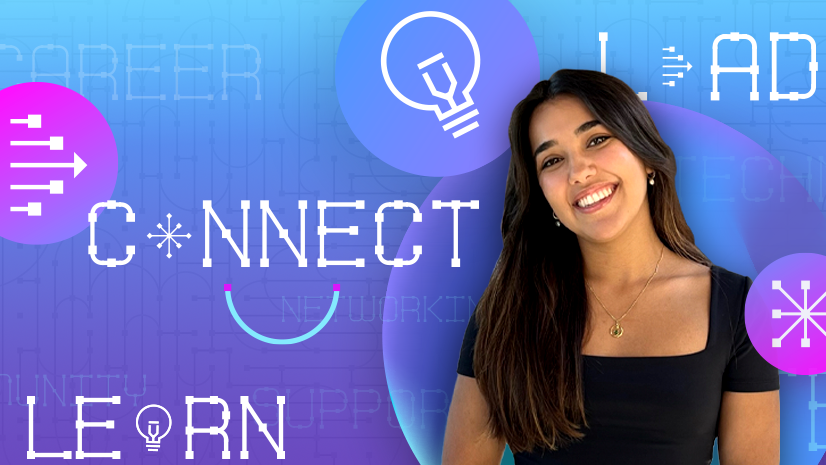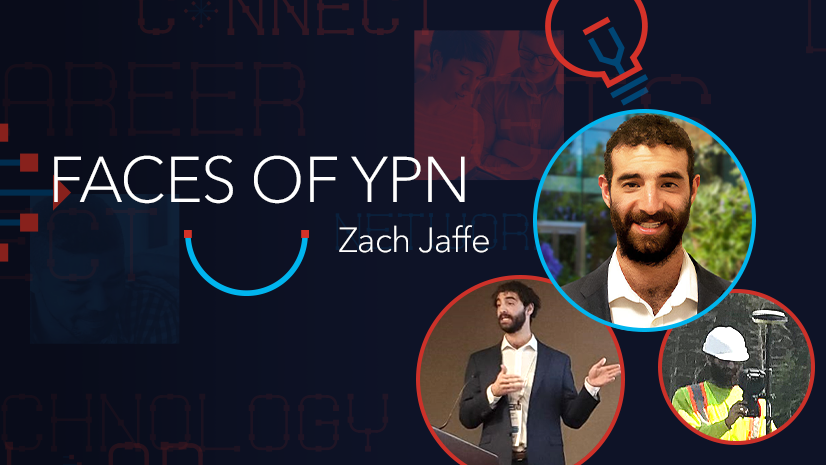Faces of YPN is an article series in which Esri Young Professionals Network (YPN) interviews a geographic information system (GIS) professional to capture and amplify their story about their personal GIS journey. In this Faces of YPN article, we highlight Kavin Phabiani, an undergraduate student at University of California, Riverside who is passionate about GIS and majoring in computer science.
We connected with Phabiani during the Education Open House at Esri headquarters in Redlands, California, where he told us about his GIS journey. He discovered GIS during an internship with the US Navy, and that led him to create a GIS club at his university campus. He describes this in his latest blog post, “How a Navy Internship Inspired the Creation of the GIS@UCR Club.”
Below is a Q&A with Phabiani as we asked him for details about his GIS journey, major takeaways, and advice to others.
Q: How did you get your start in GIS?
A: I have a background in computer science and machine learning. I was first introduced to GIS and the concept of spatial analysis during my internship with the Naval Facilities Engineering and Expeditionary Warfare Center [NAVFAC EXWC] for two summers. Because of my unique background and perspective, I was brought onto a project where we used multispectral imagery data captured by a drone to analyze an area where there was a mosquito infestation. The imagery taken by the multispectral sensor was used to detect mosquito larvae habitats by capturing wavelengths in the electromagnetic spectrum that aren’t visible to the naked eye. I really enjoyed the entire process of this project, from gathering multispectral imagery using a drone [to] stitching the images together and using ArcGIS technology to train deep learning models to detect mosquito habitats.
Q: Did you do any other internships?
A: I’ve done a few different internships. During one of my first experiences, I performed market analyses for a local farm. I used import/export market data to create data visualizations of what the market would look like for a particular product. This helped give the company insight into what form the product would best be sold.
Additionally, I did another data science internship where I was more exposed to machine learning. In this internship, I used machine learning to predict the audience response to a marketing video posted on TikTok. Through these internship experiences, I was able to land my internships with the US Navy, [and] I worked on the mosquito infestation project during both internships. The first summer, I didn’t do a lot of GIS work, but I assisted with data collection in the field where I worked hands on with drones and was able to watch them methodically fly over the study area. The next summer is when I was able to really leverage the power of GIS and spatial analysis to process all the data that was collected the previous summer in order to analyze potential mosquito habitats using deep learning.

Q: What are your biggest takeaways from your internship with the US Navy?
A: One of the key lessons I took away from this experience was the importance of having a variety of skills and different problem-solving approaches to effectively address complex issues. It’s essential to consider all aspects when solving problems and to approach challenges from various perspectives.
By combining my computer science background with the exposure to GIS, I realized that each skill you learn serves as a valuable tool for fostering innovation. Paying close attention to details, working collaboratively, exchanging ideas, and being open to feedback are all crucial elements in successfully tackling complex real-world problems.
Q: How do you use GIS in computer science?
A: Computer science and geographic information systems intersect in powerful ways, combining the analytical and problem-solving capabilities of programming with the spatial and data-driven insights of GIS. By leveraging algorithms, data structures, and machine learning, computer scientists can process and analyze large geospatial datasets to reveal patterns and trends that were previously hidden. For instance, GIS technologies depend on computational techniques for data collection, geocoding, mapping, and spatial analysis, enabling applications like urban planning, disaster management, and environmental conservation. At this intersection, computer science acts as the backbone for developing advanced GIS tools and workflows, such as geospatial visualization platforms and predictive models, which can tackle complex, real-world challenges.
My experiences exemplify the synergy between computer science and GIS. As a geospatial machine learning intern, I utilized tools like Python to analyze earthquake and geothermal well location data to see if there was a correlation between the two. This project showcased how computer science tools can enhance geospatial analysis by extracting actionable insights from raw data. I also led GIS@UCR, guiding teams in building responsive websites and collaborating with organizations like [Juan Bautista de] Anza Trail to integrate GIS-driven data collection and visualization. These experiences allowed me to combine my passion for coding with spatial thinking, creating solutions that address technical problems and have tangible impacts on the environment and communities. This intersection fuels my excitement to continue exploring the transformative potential of computer science in GIS applications.
Q: What made you want to start your own GIS club?
I started a GIS club at my university called GIS@UCR. It all started during my time in the navy when I witnessed firsthand the significant impact this tool could make. A mentor of mine from the navy, who has extensive experience in the field and even runs a GIS startup, was the one who motivated me to establish the club. I invited him to speak to the club members and demonstrate the power of location data and the tangible outcomes it can deliver. Additionally, I noticed a lack of awareness about GIS among my peers. When I first dove into GIS, I struggled to explain it to others and noticed a general lack of understanding about the field, which further fueled my decision to launch the GIS@UCR Club at the University of California, Riverside. My primary goal was to raise awareness about the practical applications of GIS and provide a platform for students to get their hands dirty with the technology and its capabilities. To enhance the real-world relevance of GIS, I try to invite professors and industry professionals to bridge the gap between theoretical learning and practical implementation.

Q: How has GIS@UCR made an impact?
A: I started GIS@UCR with the goal of creating real change in the world. It’s made an impact on me by introducing me to people I may not have met otherwise and enabling me to collaborate with students from various fields on meaningful projects. To start, I reached out to the National Park Service to explore potential projects we could contribute to. This led us to our first project involving the [Juan Bautista de] Anza Trail, which is a National Historical Trail spanning from Mexico through Arizona and ending in San Francisco. We gathered GIS data from cities and utilized open-source libraries to analyze the trail, identifying areas where urban development disrupted the path. Our goal was to find the ideal route for connecting these fragmented segments of the Anza Trail around cities and towns that interrupted its path. This experience with the Anza Trail has really shown that GIS can make a tangible impact on the community and environmental and historical conservation.
As a club, we make an effort to attend local conferences and meetups such as [Los Angeles] Geospatial Summit, Esri YPN Redlands chapter meetups, and the Education Open House at Esri. This is how we make connections with other industry experts, other students, and share how we are making an impact on campus with GIS@UCR.

Q: What’s your best advice to someone just starting?
A: My best advice is to not be afraid to get started, because you have to start somewhere. Dive into real-world applications of GIS as soon as you can, and don’t be afraid to make mistakes. This field is constantly growing and evolving, so don’t hesitate to experiment with new technology or whatever tools you already have at hand.
Personally, I have watched various YouTube videos related to GIS, completed a few Esri Training courses, and I’m looking forward to starting my first Esri massive open online course [MOOC] training to continue expanding my learning.
My final piece of advice is to connect with industry professionals who can offer insight and share their experiences, because you never know what opportunities might appear when you network.
Q: How do you plan to use GIS in the future?
A: I can see myself using GIS in various ways that blend my computer science background with geospatial technology. My goal is to take the cutting-edge approach to GIS and explore how machine learning can enhance data-driven decision-making. I am particularly drawn to spatial data science, and I would like to analyze patterns to offer valuable insights in areas like urban planning, wildlife conservation, and disaster response, to name a few.

Visit the Esri Young Professionals Network website to join YPN and start building your own network and professional support system.
As an Esri YPN member, you can leverage the network to build your own technical skills and grow your network through these resources:





